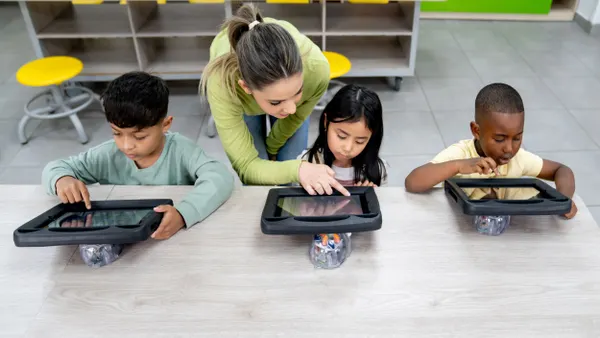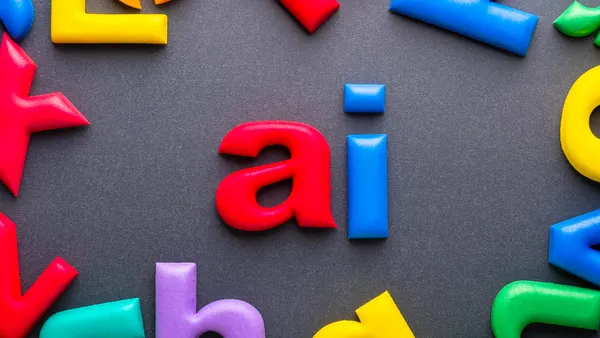Dive Brief:
- Matt Renwick, an elementary school principle in Wisconsin, argues there are concrete times when it makes the most sense to let technology, rather than pedagogy, drive instruction.
- Writing for EdTech magazine, Renwick says students need instruction on using the digital tools themselves, and they need to become tech literate, requiring teachers to re-think the constant refrain that technology should never be the focus of lessons.
- Letting technology be learning's driver, rather than just an accelerator, also gives students a chance to create new things and explore collaborations that are otherwise impossible, and Renwick says sometimes it’s fair to say learning with technology can simply be fun.
Dive Insight:
The SAMR model for technology integration covers the range of impact technology can have in a classroom. With substitution, technology just replaces what was available before and doesn’t change much about instruction. Augmentation represents a similarly direct replacement of a prior tool, but there is some functional improvement. Modification means the technology redesigns the way students can do a task. And redefinition is when technology opens the door to entirely new tasks that wouldn’t even have been imaginable with old tools.
Since educational technology has taken a foothold in schools, educators have urged getting to the final two stages when transformation occurs. In every case, however, technology is a tool that, at the minimum, enhances instruction. Renwick argues technology should be the lesson plan some days. And it’s true that students will need to be comfortable with computers and other digital tools in college and career. The challenge is figuring out how to embed that learning in tightly controlled academic years.











